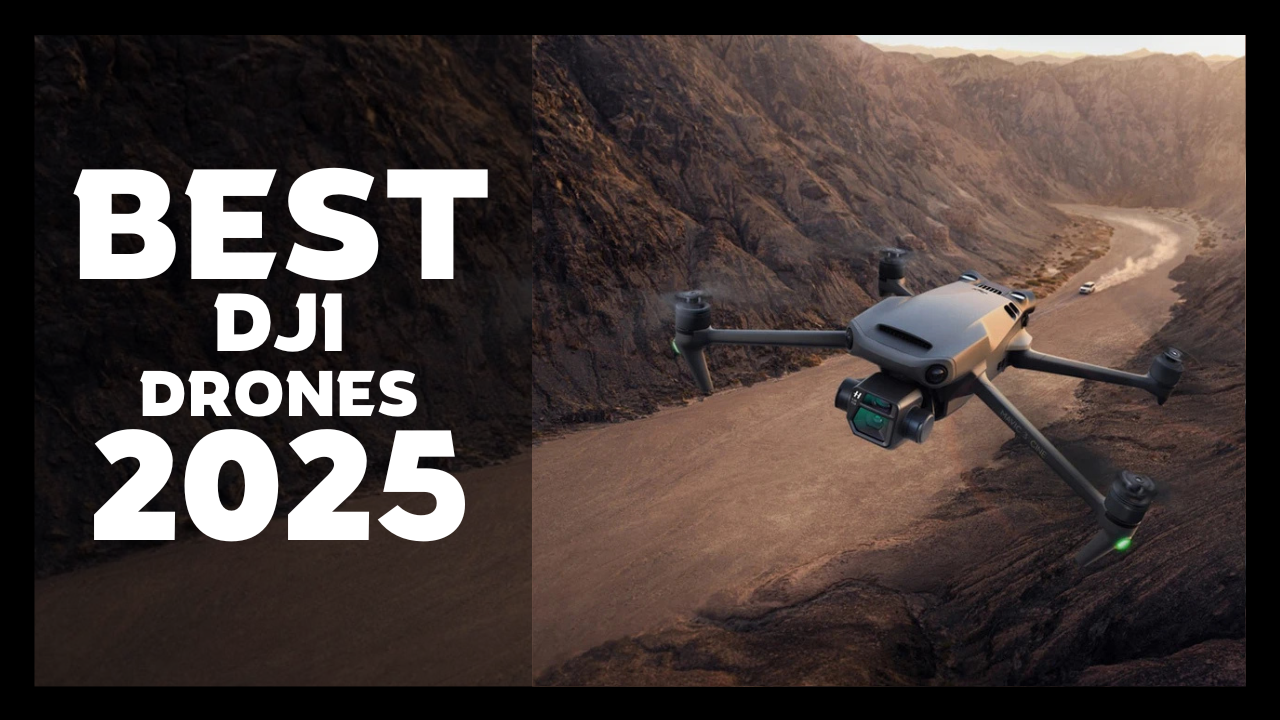The DJI drone will take to the air. Thus, we are aware of what distinguishes each model and what to consider while selecting a DJI drone. Here, we’ve condensed all of our flight-tested knowledge.
We’ve divided the guide below based on which DJI drone we think is the best option for different budgets and users. Each entry and rating is based on the results of in-depth testing, so you know that our recommendations can be trusted. DJI leads the field when it comes to consumer drones, but f you’re happy to look at models from
Table of Contents
- No 1 DJI Mavic 3
- No 2 DJI Air 3
- No 3 DJI Air 3S
- No 4 DJI Avata 2
- No 5 DJI Mini 4 Pro
- No 6 DJI Neo
Top 6 Best DJI Drones In 2025
No 1 DJI Mavic 3
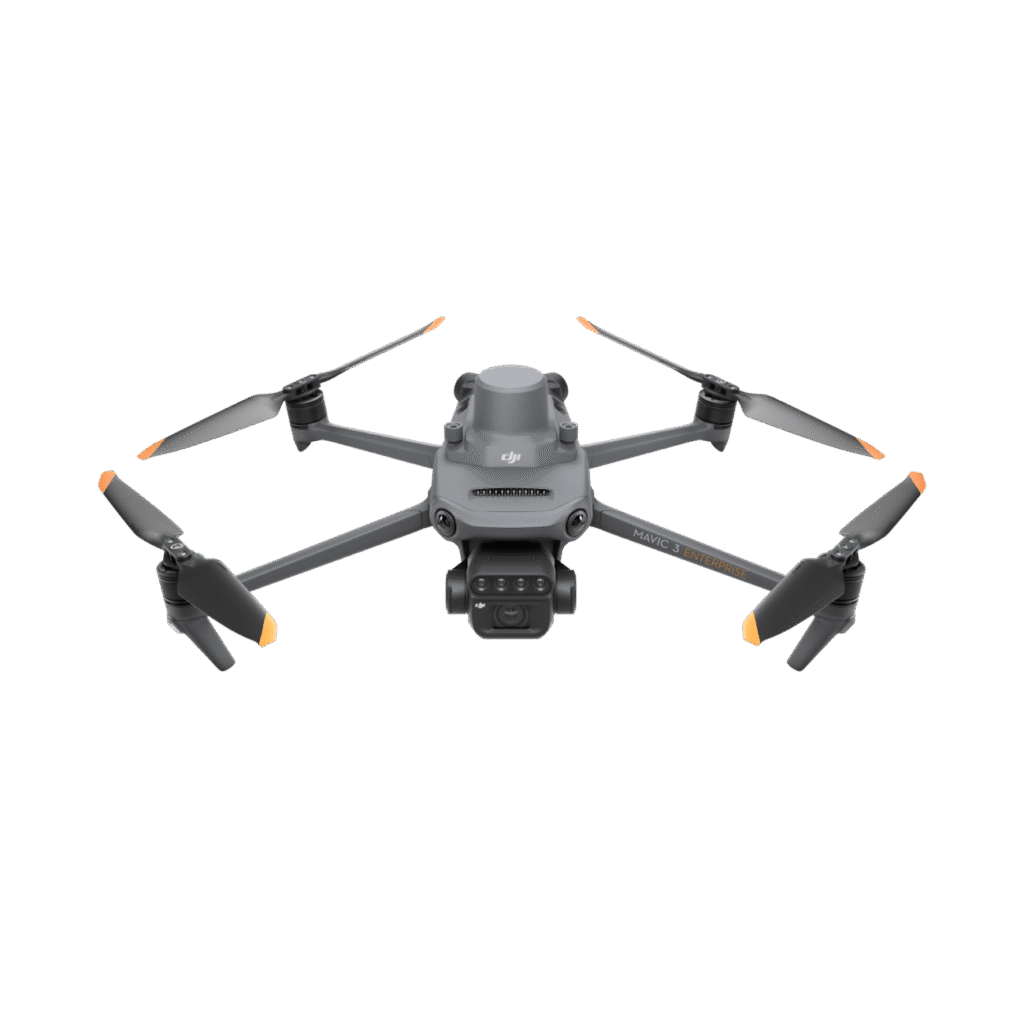
The DJI Mavic 3 is a leap forward for folding drones, thanks to its excellent video quality and safety features. In many ways, it’s everything drone fans could hope for, with an excellent Four Thirds camera, adjustable aperture, boosted battery life, and improved collision avoidance, all packed into a bundle that’s lighter than.
The DJI Mavic 3 is the most powerful folding drone the company has made so far – and in pure performance terms, it’s also the best.
The Mavic 3 is now the fully-featured drone it should have been at launch. And while the features available when it first arrived were more than enough for professionals and experienced drone pilots who typically use manual controls, the arrival of the missing features also makes the Mavic 3 much more beginner-friendly. The Mavic 3 is now the best prosumer drone you can buy, and one that could provide many years of service, thanks to the advanced features and fantastic image quality it offers.
The DJI Mavic 3 is available to order today and in one of three kits. As always, there’s a Standard version, plus a Fly More Combo that offers a range of useful accessories (including two extra batteries) for a lower price than buying everything separately.
Pros
- Four Thirds camera is excellent
- Useful adjustable aperture
- Improved safety features
- Telephoto lens a handy backup
Cons
- Pricier than Mavic 2 series
- Basic controller lacks info screen
- European classification issues
No 2 DJI Air 3
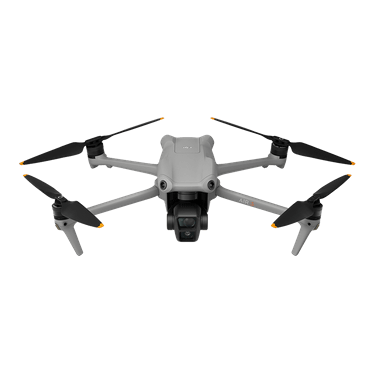
The DJI Air 3 has the potential to open up new creative avenues, making it an exciting drone to play with. While the 3x zoom may not be obviously useful at first – after all why not just fly closer? – what it offers is the ability to shoot or film what a drone this size can’t get close to, such as people and crowds. It could therefore be useful to event photographers as a way to shoot safely and legally. I can see it being a useful for landscape photographers, too – perhaps even to shoot active volcanos without your drone being turned into a lump of melted plastic.
The DJI Air 3 also offers excellent flight and safety features which never fail to impress – it makes total sense for DJI to focus on drone safety if it’s to continue existing in a world of increasingly tough, varied and inconsistent drone regulations. Safety features include Omnidirectional Obstacle Sensing, APAS 5.0 anti-collision, and Advanced Return to Home, all of which, when enabled, combine to make it pretty difficult to crash. Deciding if this is the right drone for you ultimately boils down to your needs as a pilot and as a photographer/filmmaker.
The Air 3 is positioned between the more affordable and feature-packed Mini 3 Pro, and the much more expensive but highly capable C2-category Mavic 3 Pro. Although the Air 3 is missing the ‘Pro’ moniker, its size, features and dual cameras provide a good middle ground for those struggling to make a decision. It’s a perfectly suitable drone for beginners wanting to push their creative potential, while equally appealing to more professional pilots on a budget.
The Air 3 sports a look very much in line with other foldable DJI products, in particular previous Mavics with their folding arms. What makes it stand out is its dual camera, which is large in size and protrudes from the main body. Without propellers the drone measures folded: 207 x 100.5 x 91.1mm and unfolded: 258.8 x 326 x 105.8mm.
Pros
- Dual cameras
- Excellent wind resistance
- Generous 46-minute flight time
- Already excellent safety features improved further
Cons
- C1 European rating
- Fixed aperture is bad news for ND filter users
- Large protruding camera likely to suffer in case of accidents
No 3 DJI Air 3S
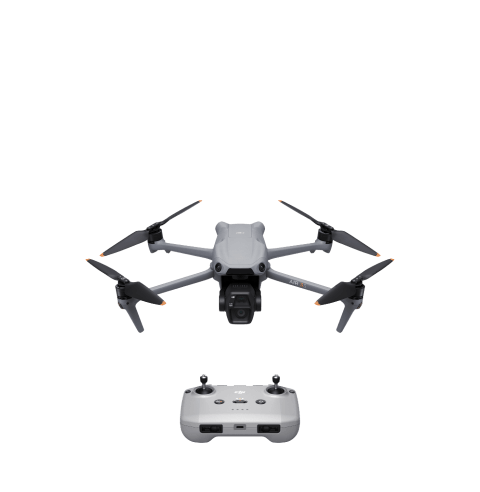
The DJI Air 3S was a great drone, the Air 3S is a slightly greater one. While that might sound like faint praise, the relatively minor upgrade makes the Air 3S he Air 3S and Air 3 are close, if not virtually indistinguishable. That being said, the Air 3S does offer a couple of notable improvements over its predecessor a larger image sensor on one of its cameras, and a more effective omnidirectional object-sensing system to help it avoid mid-air collisions with obstacles.
With the front-facing sensors now powered by LiDAR rather than standard vision tech, DJI says the Air 3S is better at navigating tricky terrain at night. It’s also packed with technology that makes it easy to fly, including automatic take-off and landing, advanced return-to-home flight, and super-stable video transmission courtesy of DJI’s O4 system.
The battery life is very impressive too, with a full charge providing up to 45 minutes of flight time. The cameras are both excellent, able to shoot raw photos and 10-bit 4K video at 60fps (120fps in slow-motion mode) with HLG or D-Log M color profiles that allow more flexibility in post-production. Users can expect up to 14 stops of dynamic range, plus superb stability in footage thanks to the three-axis gimbal. The new larger sensor on the wide-angle camera, meanwhile, gives the Air 3S a distinct advantage over the Air 3 when it comes to shooting in lower-light conditions.
DJI suggests that the Air 3S’s compact size and camera arrangement make it ideal for travel photography and video, but potential buyers should note that its take-off weight puts it in a class of drone that requires much more
Pros
- Superb battery life
- Easy and safe to fly
- Great all-round camera performance
Cons
- Weight-class restrictions apply
- A minor upgrade on the original Air 3
No 4 DJI Avata 2
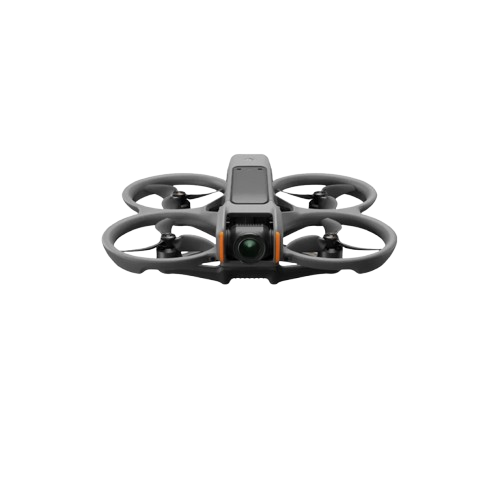
The DJI Avata 2 is finally here, and it will delight existing DJI users while also likely converting many others to FPV flight as an ‘easy’ option for entry into this notoriously difficult category of drone piloting. the Avata 2 you can then decide how easy or difficult you would like it to be.
At the novice end of the scale, you can fly easily and stress-free in Normal mode, using the intuitive DJI Motion Controller 3 and all the built-in assistance DJI provides including automatic takeoff, obstacle avoidance sensors, and automatic return to home.
This means anyone, regardless of prior experience, can enjoy the thrill of immersive flight while capturing photos or video – although really, FPV is more about the flight experience and videography. But as I’ve said, FPV is all about compromises. Does my FPV quadcopter have GPS? No it doesn’t. Does it have obstacle avoidance? No it doesn’t. Does it offer generous flight time? Nope. Does it return to home at the press of a button? It doesn’t.
The Avata 2’s 1/1.3-inch image sensor offers 12MP of effective pixels at a fixed aperture of f/2.8, and with a field of view of up to 155 degrees it supports standard, wide-angle and super-wide-angle modes. While you can take perfectly good photos with the Avata 2, it remains a drone focused on video, and those who only intend to shoot photos may want to consider one of DJI’s camera drones instead.
Pros
- Long flight time
- Incredible image quality with improved dynamic range
- Easy to fly out of the box, and packed with safety features
Cons
- Unappealing to experienced FPV pilots outside of the DJI ecosystem
- Poor ergonomics of the DJI Controller 3 show no improvement over the DJI Controller 2
- Awkward handling in manual mode, probably down to inadequate tuning
No 5 DJI Mini 4 Pro
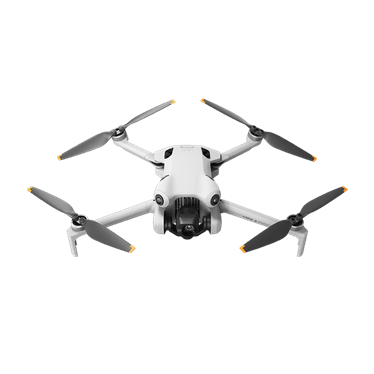
The DJI Mini 4 Pro gains iterative improvements that give this tiny drone a robust package that caters to beginners and experienced flyers, but casual flyers should check out the company’s less expensive offerings. However, I’m astounded by how much low light video is improved with the DJI Mini 4 Pro and its 48-megapixel 1/1.3-inch CMOS sensor.
The results are impressive because it’s less noisy, while still contrasting shots nicely so that details in the shadows and highlights aren’t lost. The biggest change for me in piloting the DJI Mini 4 Pro relates to its upgraded DJI O4 transmission. The average person may not be familiar with this, but it’s essentially DJI’s video transmission technology for the live feed you see on the controller.
DJI improves this in a substantial way because it’s now transmitting the feed at 1080p/60fps, versus the 1080p/30fps transmission previously with DJI O3 technology on the Mini 3 Pro. As a religious drone flyer, this is a big change because the feed is smoother and actually more true-to-life when I set the drone to record in 4K 60fps. This also helps out in making the controllers tighter, more responsive than before.
There’s no denying that the DJI Mini 4 Pro is a beast for a small drone, complete with safety features, an outstanding video performance, and various shooting modes that can make your recordings look cinematic. You could make an argument that cost is warranted, but there’s one thing I wish it had — and that’s the option to control it without a remote.
Pros
- Improved low light camera performance
- Smooth looking 1080p 60fps video transmission
- Excellent tracking & obstacle avoidance
Cons
- Still pricey for a small drone
No 6 DJI Neo

The DJI Neo is an interesting drone because of the different flight control options available – there’s something for everyone. Flight speeds are pedestrian at best when using the app or the RC-N3 Controller, but the Neo is nimble when turning.
The Neo is pretty pedestrian in terms of flight speed at just 1.11mph in Cine mode, 13.42mph in Normal mode and 17.89mph in Sport mode when flying autonomously or using the RC-N3 Controller. It feels slow but is certainly fast enough to track most subjects, including cyclists, with that top speed. Flight speed is doubled to 35.79mph when using the DJI FPV Remote Controller 3 in Manual mode, so it does have some grunt tucked up its sleeve if you have the right controller and DJI Goggles 3.
Not to mention, the skills and ability to fly in this mode alongside the cash available to purchase the controller and goggles if you don’t already own a set. For beginners though, these speeds won’t cause any issues and the ability to fly the Neo with or without any other device, through voice control or manually like a camera drone using the DJI Fly app controls or the RC-N3 Controller is ideal. For drone-only use of the Neo, it can take off and land in the palm of your hand once the selected intelligent flight mode has completed, except for Follow mode where you stop and place your hand below the Neo to make it land.
Intelligent flight modes include Follow, Dronie, Circle, Rocket, Spotlight and Custom (Omni, Helix, and Boomerang). AI subject tracking also aims to keep the subject in the centre of the frame during photo and video capture, so if you’re taking a group photo with the Neo, for example, you’d have to make sure you’re standing centre front.
Pros
- Small and lightweight
- Easy to use
- Multiple flight control options
Cons
- Only shoots photos in JPEG
- 4K video fixed at 30fps
- Expensive to add on goggles and FPV controller
How To Choose The Best DJI Drone
When choosing a DJI drone, budget will be a key factor. Professional models such as the DJI Inspire 3 cost significantly more than sub-250g drones like the DJI Mini 4 Pro. The payoff is that you get pro-grade features and a huge amount of versatility. Most people will find the sweet spot lies in the middle of the range, where models such as the DJI Air 3 balance performance, portability and price. If you’re looking for something more affordable, you can also look at last-gen drones like the DJI Mini 3.
Models with safety characteristics like obstacle avoidance should be sought after by learners. While not included on all DJI drones, this is a helpful feature to lower the possibility of collisions in midair. The automatic shooting and subject-tracking features of DJI drones are also well-known for making it simpler to take dramatic pictures.
Although most DJI drones come with a controller, not all of them are the same. Though DJI has manufactured many controller types, it’s important checking which kind comes with your selected model. Almost all of them include some sort of screen and joystick arrangement. If you want additional control or a different kind of grip, you may also decide to upgrade to an optional handset.
DJI drones are renowned for their image quality and the effectiveness of their stabilization. Pretty much every DJI drone can record 4K video, but some capture higher frame rates and better dynamic range. The right choice will depend on whether you plan to focus more on stills or video, and how serious you are about either (or both). The Mavic 3 Pro, for example, has three cameras for maximum versatility, while the DJI Mini 3 Pro supports the D-Log M color profile for consistent video grading.
Finally, don’t overlook size and weight. Many DJI drones can be folded down to fit in a carry case or backpack for easy travel, but weight limits are crucial. Larger drones tend to be more stable, but come with additional registration requirements. Drones weighing less than 250g, like the DJI Mini 4 Pro, fly under most regulations.
Please be aware that we may receive a commission if you buy something after clicking on the links in our stories. This helps to fund our work. Thank you for your support and attention. Feel free to look around further to find out more about how these commissions support our work. Top Great Reviews

